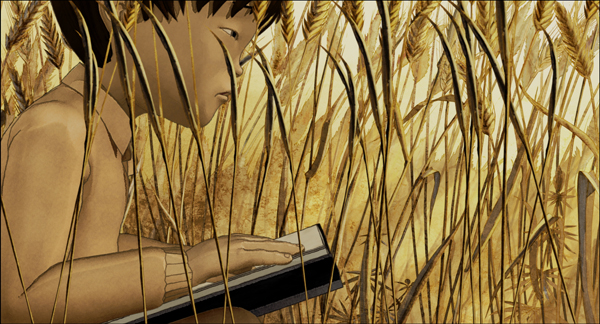Currently there is a great deal of debate about the exportation of children from war-torn and other traumatized countries. A large number of adult international adoptees agree that the best option is always for a child to be parented by his or her birth parent, then domestic adoption, and, only as a last resort, intercountry adoption.
Filmmaker Jung Henin acknowledges that race and poverty in a social and political context have much to do with the abandonment of many Korean children. Otherwise, his animated memoir primarily stays away from any debate or politics and instead allows the viewer a visceral understanding of the conflict and confusion of his life. He was adopted from South Korea and ending up in Belgium in 1971, with a family of four blonde-haired siblings. The film creates access into his strange world—the confusion of identity, the internalized sense of rejection and hatred, the hyper-sensitivity and personalization of being different, of not belonging.
South Korea was forefront of international adoptions. In the aftermath of World War II and the Korean War, more than 200,000 children were sent to live with families abroad, according to the Korean Ministry of Health and Welfare. As recently as 2005, South Korea was the fourth largest provider of children to U.S. families, according to the U.S. State Department.
Central to the film and, indeed, adoption, are issues of control, fantasy, and identity. These themes are reflected beautifully in the way the film is made: Jung (he uses his first name—given to him in Korea and kept in Belgium) deploys a hybrid of techniques—his own animation intercuts with snippets of super 8 family footage and archival film. Effortlessly moving back and forth between these different forms of footage creates both an unsettling and a richly, multilayered experience.
Jung was always interested in drawing, and at a crucial point in his teens, comic book art became a lifesaver for him. He says, “Drawing was both a way to escape and control.” He found his love of drawing coming to fruition through Japanese comics and begins—ironically (due to the historical conflict and animosity between Korea and Japan)—to identifying himself as Japanese.
Nestled among the everyday moments of life, such as building a snowman, eating breakfast, or walking to school, are explicit moments that pierce through the seeming normality and shock both the viewer and the main character. In super 8 family footage, his grandmother says she has four grandchildren. When she is reminded there are five, she says, “Oh, I forgot about the little Asian.” The film then flashes back to footage of a street urchin in an Asian country. We soon realize that the flashback is about how Jung lived in South Korea and was brought to the attention of the authorities. A forgotten “little Asian” takes on another meaning with this approach to time, place, and format.
In Jung’s Belgian town, there were 12 other Korean children. Jung avoids these children, saying he “wasn’t ready for a reflection of himself.” When he later has a lone friendship with one of these girls, they both recoil in horror at the thought of going out with another Asian. “It would be like going out with my brother!” the girl says. This is interspersed with Jung’s confused relationship and semi-crush on his blonde older sister, which again, brings a layered implicit understanding of the issues.
A sixth child is added to his family, another Korean adoptee, Valerie. Jung says, in one of many moments of dark humor, “I hated to meet other Korean adoptees and now I had to live with one.” When his dad harshly spanks him after he steals a lunch coupon and lies about it, we understand the bewilderment and immensity of the issues as his father angrily asks, while beating Jung, “Who do you think we are, strangers?”
Jung moves out of the family house as an older teen, in part due to the painful beatings from his mother and father. He obsessively and painfully eats only white rice with Tabasco sauce, making himself so ill he’s hospitalized, in serious jeopardy. His internalized self-hatred comes about by the multiple losses of family, place, and culture, and becomes a larger issue by the time we get to a segment of the deaths of many young Korean adoptees by suicide and other seemingly “random” events, including the death of Valerie at age 25.
This is a welcome and unique addition to films by and about Asian and internationally adopted children. Deann Borshay Liem’s films, First Person Plural (2000) and In the Matter of Cha Jung Hee (2010) on the Korean adoption experience, are straightforward documentaries and illuminate the issues more concretely. Liem’s film Memory of a Forgotten War looks even more deeply into the historical context of the Korean War through the lives of four Korean Americans, who decades later reunite with relatives from North Korea.
Jung’s film leaves one with a more felt and less intellectual understanding of the experience. While much of it is richly and implicitly nuanced, the ending feels pat and anticlimactic, making an overarching pronouncement about Jung’s identify and family that seems a false conclusion at best. This, in turn, can be seen as yet another desperate attempt to come to terms and reach a resting place with the questions brought forth.







Leave A Comment